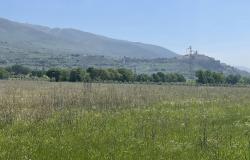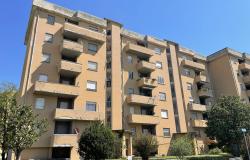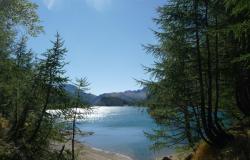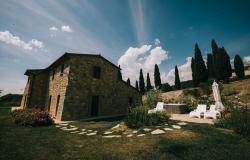Philip Paris is the author of two books about the World War II Italian Chapel on the Orkney Islands, Scotland, UK. “The Italian Chapel” is a historical novel about the building of the Chapel and "Orkney's Italian Chapel” is a non-fiction account. Pat talked to Philip about his fascination with the Chapel and about its history.
Philip, can you tell us how you first heard about the Orkney Italian Chapel? I moved to the Highlands of Scotland from the south of England in 2005 to be with my fiancée, Catherine. It was the beginning of a completely new life for me. That year, we went on honeymoon to Orkney and saw the Italian Chapel for the first time.
I moved to the Highlands of Scotland from the south of England in 2005 to be with my fiancée, Catherine. It was the beginning of a completely new life for me. That year, we went on honeymoon to Orkney and saw the Italian Chapel for the first time.
Why did you decide to write a book about it?
On our first visit to the Chapel, we had the building to ourselves and as Catherine and I stood before the rood screen, we were both moved to tears. Before we had even left the building I had decided to find out as much as possible about its history. This quest turned into the most amazing journey I’ve ever made in my life.
Before we talk about the building of the Chapel, can you tell us where the Italians who worked on it were taken prisoner?
They were captured during the North African campaigns and were being held in a camp in Egypt when around 1,200 were chosen during the summer of 1941 to be sent, via ship, to Liverpool then Scotland by train and on to Orkney, where they were split between two camps.
How did they react to their imprisonment in Britain?
The weather, living and working conditions – on the Churchill Barriers, in the quarry or in the blockmaking yard - hit the Italians hard. They had been used to the heat of the North African desert. Some fell ill with psychological problems and they all worried about loved ones back home, particularly as Italy became more of a battlefield later in the war.
Did they have any contact with the local community? There were some local men working on the barriers along with the Italians. After the Armistice with Italy in September 1943 they had greater freedom, particularly once the barriers were passable on foot. There were two Italian POWs camps: Lamb Holm, where Camp 60 stood and the Chapel was later built, was a small island. The other camp was on Burray, which was inhabited, so the men in this camp had much more contact with local families and many friendships were formed that continued for decades after the war.
There were some local men working on the barriers along with the Italians. After the Armistice with Italy in September 1943 they had greater freedom, particularly once the barriers were passable on foot. There were two Italian POWs camps: Lamb Holm, where Camp 60 stood and the Chapel was later built, was a small island. The other camp was on Burray, which was inhabited, so the men in this camp had much more contact with local families and many friendships were formed that continued for decades after the war.
Several of the Italians from Camp 60 later met girls in England (none remained in Orkney) and they either remained or came back after being repatriated.
How did the idea of building a chapel come about?
The idea to build a chapel already existed in Camp 60 and even the British Inspector of POW camps had suggested that this should be done. However, Camp 60 had no priest and it wasn’t until the arrival of Padre Giacomo in September 1943 that the idea was taken up.
Who were the Italians who worked on the Chapel? The key craftsmen were:
The key craftsmen were:
Domenico Chiocchetti, artist and the main person behind its creation. He painted the Madonna and Child above the altar; Domenico Buttapasta, the stonemason who built the façade; Giuseppe Palumbi, a blacksmith who built the beautiful rood screen; Giovanni Pennisi, an artist from the other Orkney camp, brought over to help paint the nave. He created the stunning bas-relief of the face of Christ, which is in the façade. There was a carpenter, two electricians and two bricklayers plus others who laboured or foraged for materials.
But what most not be forgotten is the help provided by the British, who sourced the two Nissen huts used for the Chapel and provided other materials.
Yes, I was going to ask you how the materials were found in wartime.
Balfour Beatty, the construction company, donated concrete for the foundations. Much of the other material was scavenged from the blockships. These were old ships, part sunk between the islands in an earlier attempt to block the entrance into Scapa Flow. From these they found wood, including that for the tabernacle, glass, tiles, metal. Some items were purchased, such as the plasterboard used to line the walls, but the Italians used their ingenuity to create objects. Used bully beef tins were tuned into lanterns and the brass stair rods from a blockship were made into candlesticks.
How long did it take to build the Chapel? They began in November 1943 and it was virtually complete by the summer of 1944. Camp 60 commander Major Buckland had given permission for the main craftsmen to work full time on the Chapel, as long as their work on the barriers was covered, which it was, willingly, by other Italians in the camp. But the men were moved from Camp 60 to Yorkshire in the September, so it was in use for only a short while.
They began in November 1943 and it was virtually complete by the summer of 1944. Camp 60 commander Major Buckland had given permission for the main craftsmen to work full time on the Chapel, as long as their work on the barriers was covered, which it was, willingly, by other Italians in the camp. But the men were moved from Camp 60 to Yorkshire in the September, so it was in use for only a short while.
You've now met some of the Italians who worked on it. How did you find them?
The main source for contact details of ex POWs and the descendents of the men who ran Camp 60 has been the Italian Chapel Preservation Committee, which was formed by a group of local Orkney people in 1958, under the guidance of the local Catholic priest, to save the building. By this time it had fallen into a very poor state of repair.
Have any of the Italians been back to Orkney or to Britain as far as you know?
Most of them thought that the chapel had been pulled down after the war, which is indeed what happened to the majority of chapels built in Italian WW2 POW camps around the world. (I did track a few down that still exist, including one in West Wales). However, in the 1960s there was quite a bit of publicity about the Orkney chapel and word spread.
In 1992, eight ex POWs from the two Orkney camps made an historic return to Orkney with their families. It was highly publicised and they were treated as honoured guests. Several later made private visits and in 1995, seven ex POWs came back to attend the 50th anniversary of the official opening of the Churchill Barriers, which they had helped to construct.
What do you think the legacy of the Chapel is? Alberto Pizzi, whose father had been a POW in Camp 60, said, ‘The chapel is a moving, never-ending story.’ He is right. It is a great symbol of hope and peace from the Second World War and certainly one of the most inspiring. It continues to bring people together as friends.
Alberto Pizzi, whose father had been a POW in Camp 60, said, ‘The chapel is a moving, never-ending story.’ He is right. It is a great symbol of hope and peace from the Second World War and certainly one of the most inspiring. It continues to bring people together as friends.
To quote from “The Italian Chapel”:













